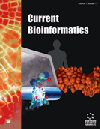- Home
- A-Z Publications
- Current Bioinformatics
- Previous Issues
- Volume 15, Issue 2, 2020
Current Bioinformatics - Volume 15, Issue 2, 2020
Volume 15, Issue 2, 2020
-
-
Protein Secondary Structure Prediction: A Review of Progress and Directions
More LessAuthors: Tomasz Smolarczyk, Irena Roterman-Konieczna and Katarzyna StaporBackground: Over the last few decades, a search for the theory of protein folding has grown into a full-fledged research field at the intersection of biology, chemistry and informatics. Despite enormous effort, there are still open questions and challenges, like understanding the rules by which amino acid sequence determines protein secondary structure. Objective: In this review, we depict the progress of the prediction method Read More
-
-
-
Elucidating the Functional Role of Predicted miRNAs in Post-Transcriptional Gene Regulation Along with Symbiosis in Medicago truncatula
More LessAuthors: Moumita R. Chowdhury, Jolly Basak and Ranjit Prasad BahadurBackground: microRNAs are small non-coding RNAs which inhibit translational and post-transcriptional processes whereas long non-coding RNAs are found to regulate both transcriptional and post-transcriptional gene expression. Medicago truncatula is a well-known model plant for studying legume biology and is also used as a forage crop. In spite of its importance in nitrogen fixation and soil fertility improvement, little infor Read More
-
-
-
A Study on Host Tropism Determinants of Influenza Virus Using Machine Learning
More LessAuthors: Eunmi Kwon, Myeongji Cho, Hayeon Kim and Hyeon S. SonBackground: The host tropism determinants of influenza virus, which cause changes in the host range and increase the likelihood of interaction with specific hosts, are critical for understanding the infection and propagation of the virus in diverse host species. Methods: Six types of protein sequences of influenza viral strains isolated from three classes of hosts (avian, human, and swine) were obtained. Random forest, naïve Read More
-
-
-
Prediction of RNA Secondary Structure Using Quantum-inspired Genetic Algorithms
More LessAuthors: Sha Shi, Xin-Li Zhang, Le Yang, Wei Du, Xian-Li Zhao and Yun-Jiang WangBackground: The prediction of RNA secondary structure using optimization algorithms is key to understand the real structure of an RNA. Evolutionary algorithms (EAs) are popular strategies for RNA secondary structure prediction. However, compared to most state-of-the-art software based on DPAs, the performances of EAs are a bit far from satisfactory. Objective: Therefore, a more powerful strategy is required to im Read More
-
-
-
Integrated In-silico Analysis to Study the Role of microRNAs in the Detection of Chronic Kidney Diseases
More LessAuthors: Amina Khan, Andleeb Zahra, Sana Mumtaz, M. Qaiser Fatmi and Muhammad J. KhanBackground: MicroRNAs (miRNAs) play an important role in the pathogenesis of various renal diseases, including Chronic Kidney Diseases (CKD). CKD refers to the gradual loss of kidney function with the declining Glomerular Functional Rate (GFR). Objective: This study focused on the regulatory mechanism of miRNA to control gene expression in CKD. Methods: In this context, two lists of Differentially Expressed Genes ( Read More
-
-
-
A Comparative Study to Explore the Effect of Different Compounds in Immune Proteins of Human Beings Against Tuberculosis: An In-silico Approach
More LessAuthors: Manish K. Tripathi, Mohammad Yasir, Pushpendra Singh and Rahul ShrivastavaBackground: The lungs are directly exposed to pollutants, pathogens, allergens, and chemicals, which might lead to physiological disorders. During the Bhopal gas disaster, the lungs of the victims were exposed to various chemicals. Here, using molecular modelling studies, we describe the effects of these chemicals (Dimethyl urea, Trimethyl urea, Trimethyl isocyanurate, Alphanaphthol, Butylated hydroxytoluene and Carbar Read More
-
-
-
Comparative Transcriptome Profiling of Disruptive Technology, Single-Molecule Direct RNA Sequencing
More LessAuthors: Chaithra Pradeep, Dharam Nandan, Arya A. Das and Dinesh VelayuthamBackground: The standard approach for transcriptomic profiling involves high throughput short-read sequencing technology, mainly dominated by Illumina. However, the short reads have limitations in transcriptome assembly and in obtaining full-length transcripts due to the complex nature of transcriptomes with variable length and multiple alternative spliced isoforms. Recent advances in long read sequencing by the Oxford N Read More
-
Volumes & issues
-
Volume 20 (2025)
-
Volume 19 (2024)
-
Volume 18 (2023)
-
Volume 17 (2022)
-
Volume 16 (2021)
-
Volume 15 (2020)
-
Volume 14 (2019)
-
Volume 13 (2018)
-
Volume 12 (2017)
-
Volume 11 (2016)
-
Volume 10 (2015)
-
Volume 9 (2014)
-
Volume 8 (2013)
-
Volume 7 (2012)
-
Volume 6 (2011)
-
Volume 5 (2010)
-
Volume 4 (2009)
-
Volume 3 (2008)
-
Volume 2 (2007)
-
Volume 1 (2006)
Most Read This Month
Article
content/journals/cbio
Journal
10
5
false
en


